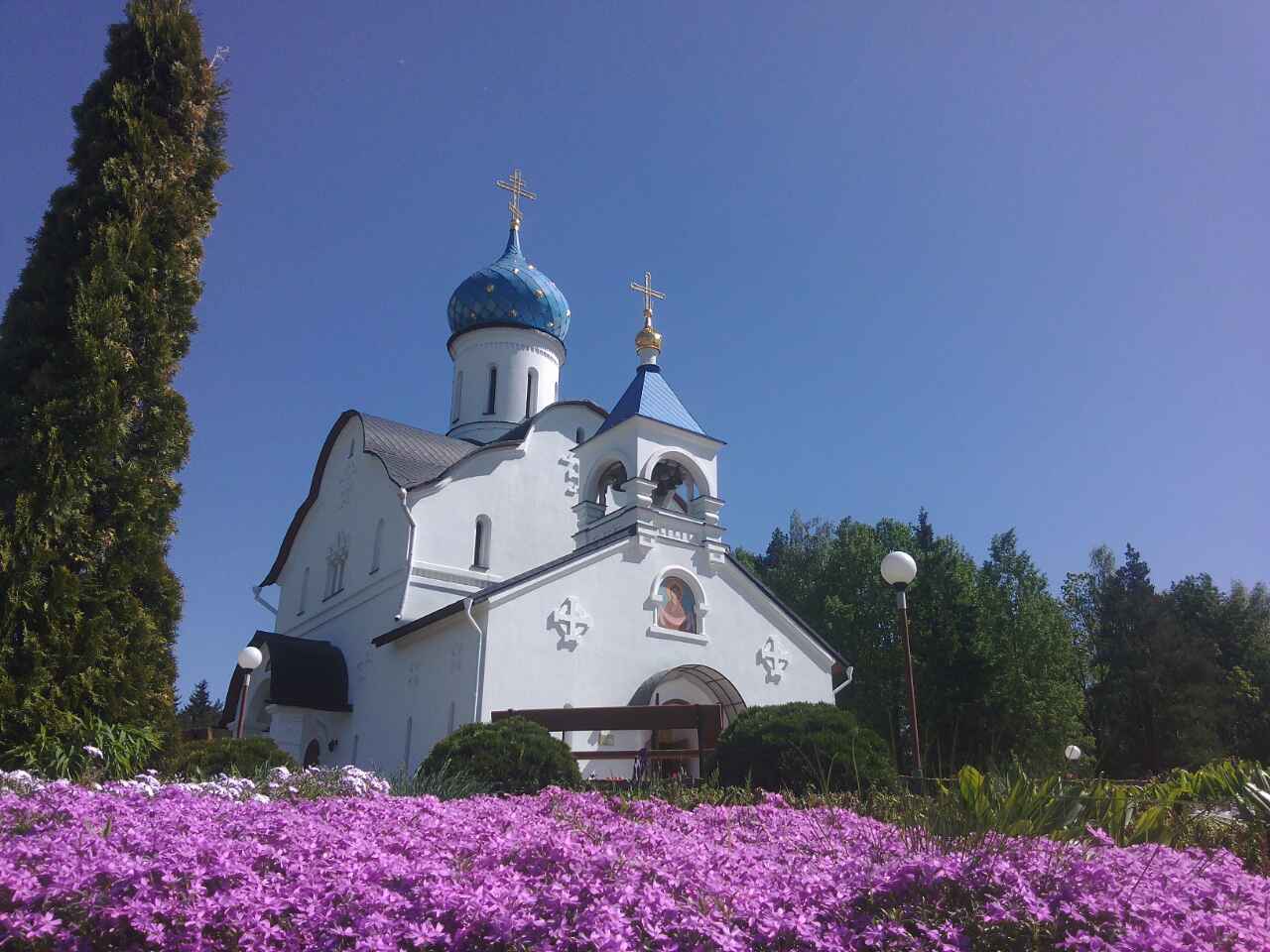
On 3 January, the monastic farm at Lysaya Gora celebrated the anniversary of an important and memorable event in its history, and in the life of the Convent of St. Elisabeth. Ten years ago, Metropolitan Philaret of Minsk and Slutsk and Bishop of the Belarusian Orthodox Church performed monastic tonsure for the Convent’s first group of monks.
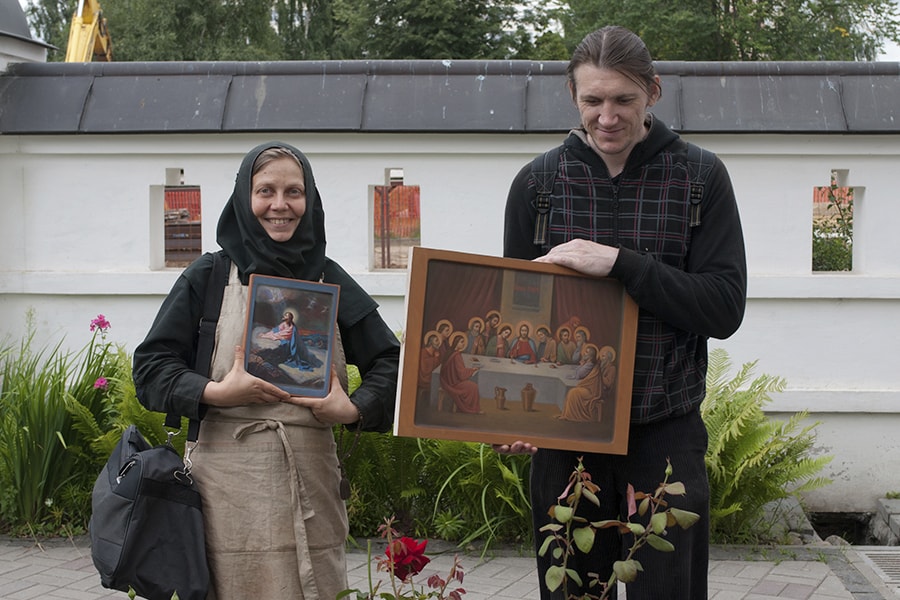
As an eyewitness to this event, Nun Marfa (Matveeva) recalls:
Let me begin my story with a small digression. The church where the sacrament took place is a very special place. It brings together by the will of God people who have nowhere else to go. Many will have lived for years a life that they are too ashamed to look back on. Then, all of a sudden, through His mysterious workings, a wandering soul comes back to His Father. This is a real miracle. Here comes a man who had squandered all his wealth in a distant country who comes begging for shelter and food and finds a loving Father welcoming him back.
The homecoming of the Prodigal Son is depicted in the fresco, in the Church in Honour of the Icon of the Mother of God, “Inexhaustible Chalice”. The frescoes show the key episodes of biblical history - the creation of the world, the falling from grace of Adam and Eve, the wandering of the Prodigal Son and his repentance and return to his Father.
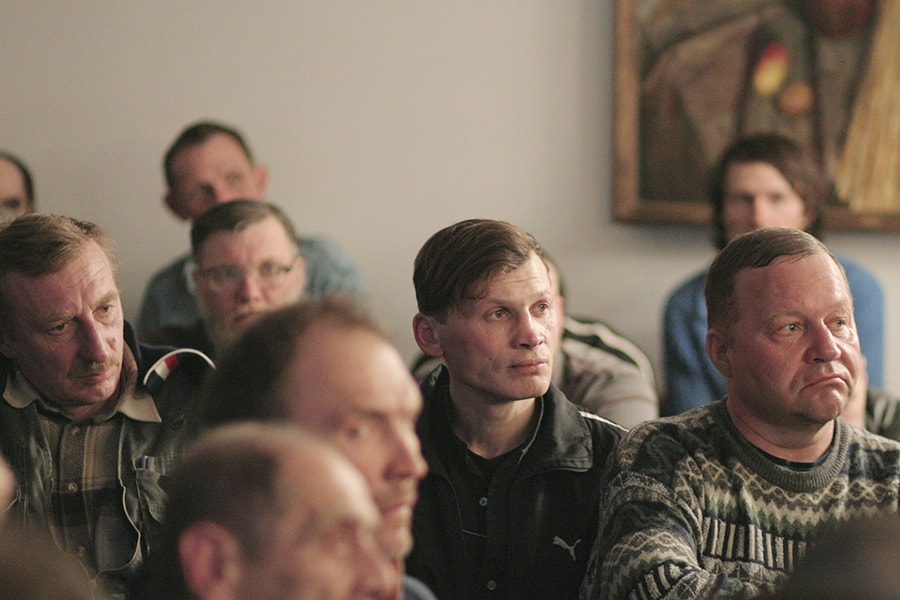
It was interesting to observe the brothers from the homestead as they were meeting the Metropolitan on the doorsteps of the church. This was not a triumphant crowd; their looks showed traces of their past lives, some were on crutches. They were the crippled and the lame from the outskirts of this world who had been invited to the scriptural wedding banquet.
Metropolitan Philaret entered the Church and the Divine Liturgy began followed by the consecration of the church. The heavenly flood of God’s grace was pouring, and the faces were transformed. This culminated in the taking of monastic tonsures, which symbolises the return to our Father’s fold.
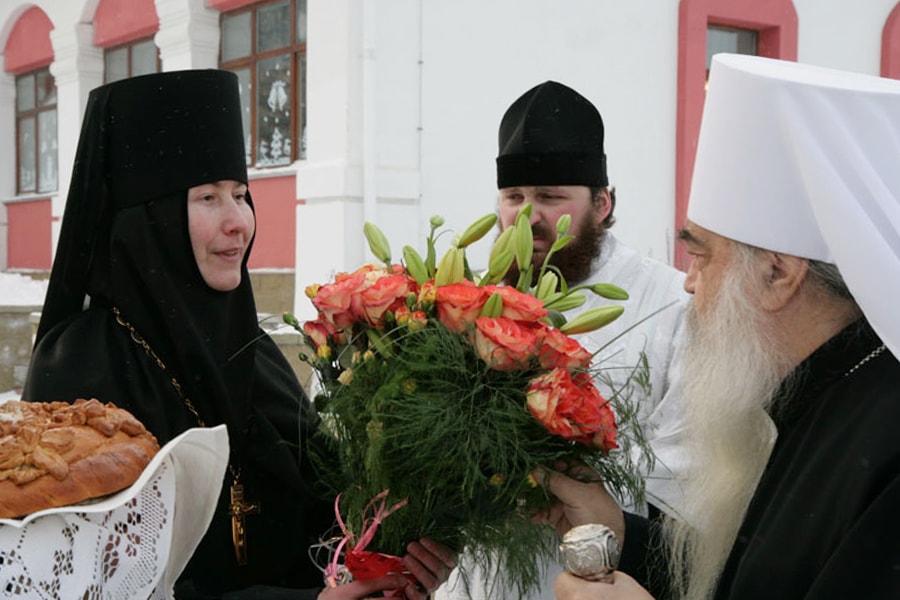
On that day, tonsure was conferred on six novices of the Brotherhood of Optina Elders at the Convent of Saint Elisabeth. Three monks have stayed at the Convent to this day, and continue to do their obedience. We have asked them to talk about how God brought them to the Convent, to share their memories of the tonsure service and talk about their lives at present.
.jpg)
Monk Dimitrius (Kozyrev):
I came to the Convent back in 2002, at a time when the brotherhood of Optina elders was forming here at the Convent. We began as novices. It was not until a much later time that we began to look towards becoming monks. A novice is always free to leave the convent at any moment, but a monk takes an oath before God to remain and to be His servant.
The decision to accept tonsure was a difficult one, and it took a lot of soul-searching. It was not about my choice of monastic life: I came to the monastery aspiring to it, and I did not desire any other. I just felt that I was not ready for that at that moment; I did not consider myself to be worthy enough. Saint John the Baptist helped me with my decision. The answer to my request arrived on the day of the feast of John the Baptist.
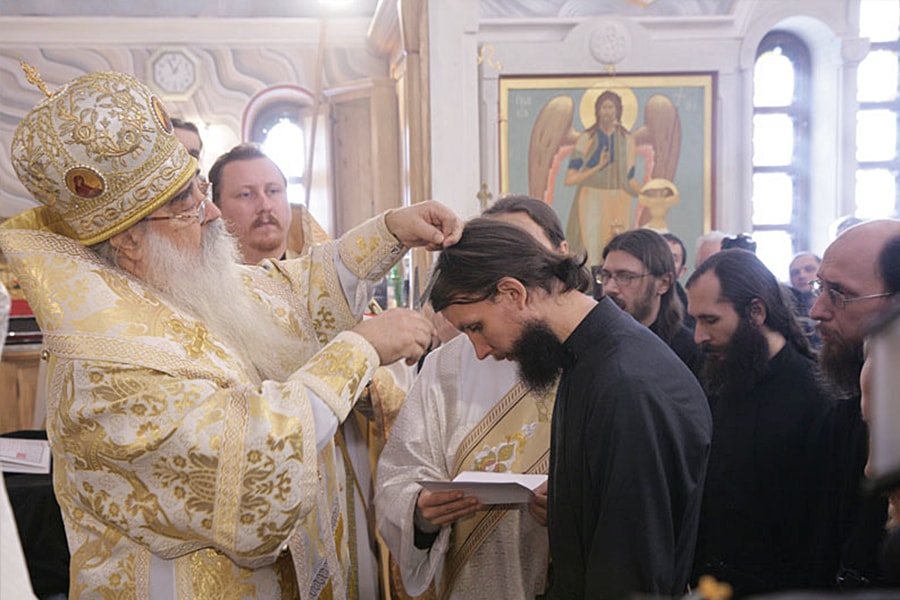
I chose to go ahead with it. I cannot say that I felt any strong emotion during the tonsure service. I remember standing next to the other brothers, and I had the sense that I belonged there. After the tonsure service, we spent the night at church saying prayers and reading psalms.
After my tonsure, I was tasked with very responsible obedience - to manage the artisan workshops. We were working on interior decoration projects, including that of the Church of the Reigning Icon of the Mother of God. At present, I am the chief architect of the Convent. Among the latest projects of our workshop are the interior designs of the Church of St. John of Shanghai and that of the Church of the Venerable Sergius of Radonezh at the farmstead rehabilitation centre for women; we are also doing the interior decoration of our educational and outreach centre. I am the brother superior of the Optina Elders brotherhood, which now numbers 12 people.
In a new and proactive monastery such as ours, spiritual fathers play a key role. Father Andrey Lemeshonok is at the helm; he is the backbone of our community; his role is very valuable - he helps us maintain the unity of purpose. This is a very rare gift indeed.
I have spent 18 years here, and I have always seen it as my home. This sense of being home is still there after all these years.
.jpg)
Monk Maxim (Kobylyanets):
I accepted baptism after my military service, and I came to the Convent a year later. They were telling me that my saint was Maxim the Greek. I could not understand this: why should my saint be a Greek? I wanted a Russian saint. But after learning more about the saint, I found out that I was baptised on the day of the Feast of the Reverend Maxim the Greek. That was the day I came to the Convent.
Someone I knew from my hometown was already working at the Convent as foreman. He invited me to come and work here also. I came in 2001, and have been here for almost 20 years.
One day, I asked for permission to stay at the Convent during the Great Lent. I was enjoying the worship services, and that way I could take Communion often. After Great Lent was over, I returned to my flat. I found life too difficult there - there was just too much noise and too much confusion. I asked to go back, and eventually I became a resident worker. But my new life took some adjustment, and I was on the brink of giving it all up several times.
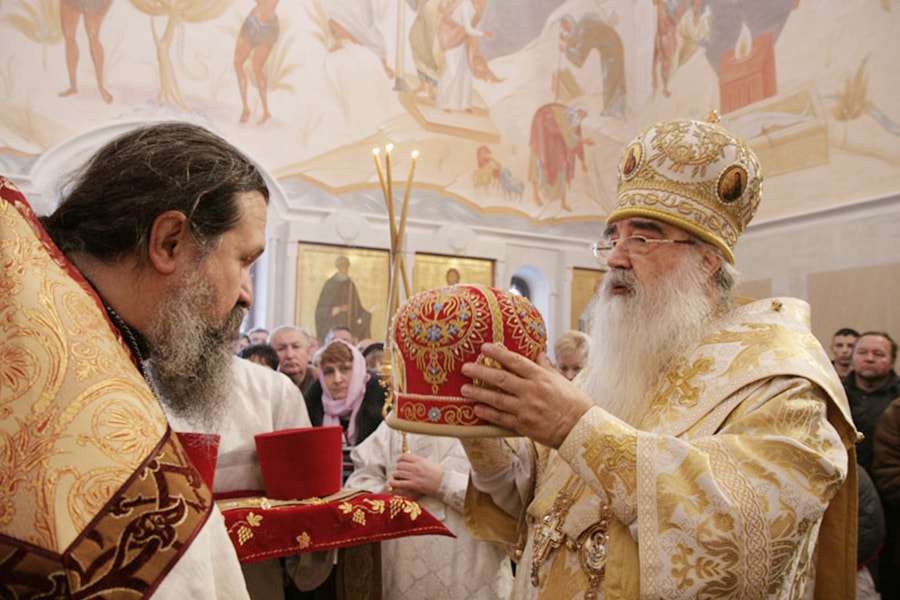
While the other brothers were preparing to accept tonsure, nobody even thought of tonsuring me. At the last moment, Father Andrey said: “Go join them”. This was a surprise for everyone, including myself. Then he asks me: “Are you taking tonsure?” I did not answer. If I had said yes, and it had not worked out, I would have let him down; but saying nothing did not seem right, either. I relied on God’s will. Father Andrey asked me three times, and I remained silent. Then he said: “Go try on your vestments”; I had my vestments made for me, and on the day before the tonsure service I said: “It will probably not work out for me; I am too fun-loving; perhaps I should not do it”.
I continued to have my doubts; I was afraid that I was not worthy of becoming a monastic, but I did take my tonsure. God granted me this blessing before I fully deserved it, and I am now working to live up to His trust, but not very successfully. Having the appearance of a monk is quite easy - wearing a beard and a gown. But this is not the same as being one. Without sacrificing oneself for the sake of God and other people, without having obedience and humility, all efforts will be in vain.
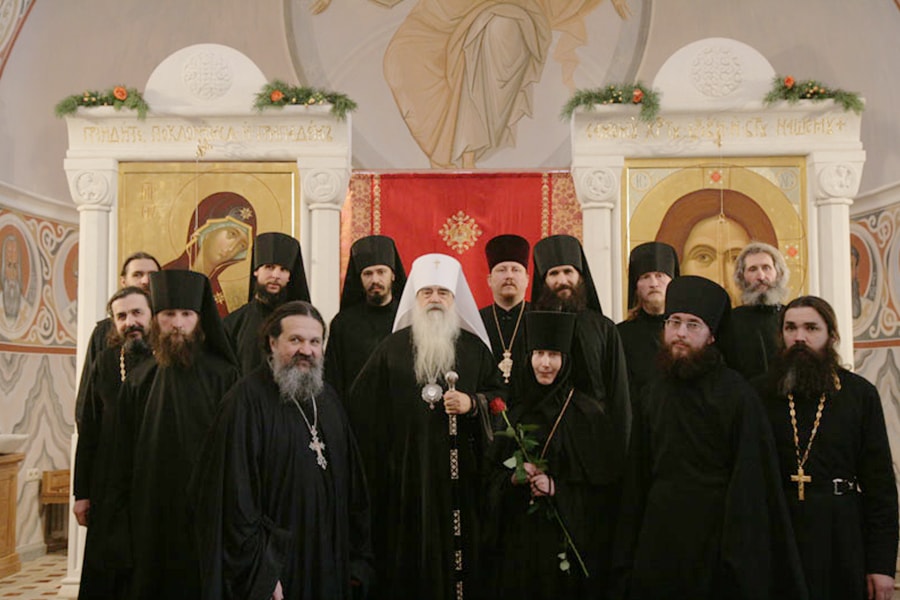
At the Convent, I have worked as a plasterer, and a guard at the North Cemetry; I have travelled to exhibitions and assisted at worship services; I have put groundingon icon canvases at the priming studio, and I worked at the book binding workshop. My most recent obedience is cleaning the sidewalk. There were no orders for book binding, so I took up sweeping.
In monastic life, everyone is a voluntary slave to everyone else. Few are willing to be slaves and a servant to another, but many want others to be their servants. Our Lord says: “I see your zeal, now show me your humility” (1 Peter 5: 5). In monastic life, pride is hell, and humility is a blessing. I think this is the most important thing to realise for anyone who wants to be a monastic. People have no humility, and I am first among them.
.jpg)
Monk Sergius (Mikhniuk):
I came to the Convent some 17 - 18 years ago. I became a resident labourer two months later. We were living and working together with the other brothers. Back then, there was a lot of construction going on, the convent was growing and expanding. I think that most people were not coming for the monasticism; most were inspired to be a part of the creative process and to contribute to it meaningfully. Many of them were going through a period of spiritual romanticism.
As far as I remember, the Convent back then had only 12 monastic sisters, and ten times as many labourers. Some of them eventually developed a clearer focus and began to look towards monasticism. Although it was not yet clear what all of this would amount to, it was well understood that one would make no progress without moving on to the next stage. We viewed monastic tonsure as this next stage.
There were a lot of people at church on that day. I remembered Metropolitan Philaret very well. He is a man with a wealth of spiritual experience.

The rite of tonsure to me was an act of Divine Providence. Any person who is in communication with God would remember this experience. This need not necessarily be the office of tonsure; it could be some other sacrament, such as baptism, Communion or Confession. By humbling oneself, one is rewarded by the sence of peace and fulfillment. But life does not consist entirely of such moments. To be successful, one needs to work hard, look deep into one’s heart and be honest with oneself.
My obedience is at the publishing house. I am responsible for the selection of books that are of interest to our audiences. I travel a lot, and meet many people. It is important to listen to others. Without doing so, you might go on publishing books, but no one will be buying them.
We are very proactive, which makes us distinct from many other monasteries. I do not believe that you could find anywhere else a monastery with 40 studios and 2000 employees. Every labourer, novice or monk has the choice of their preferred occupation depending on what they prefer: quiet contemplation or intense activity. The spiritual father will help, but the ultimate responsibility lies with the person.